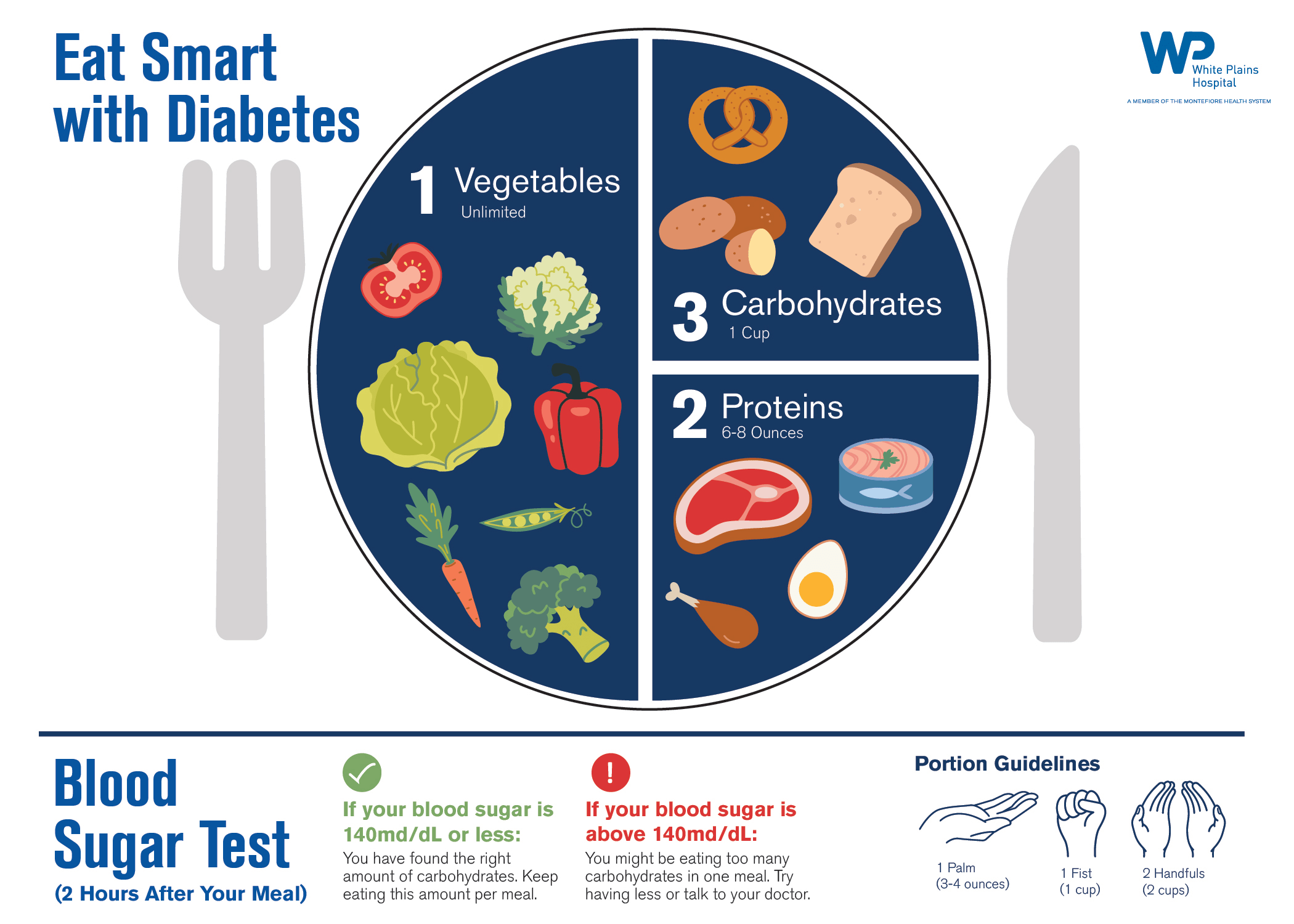More than 38 million Americans, or nearly 12% of the U.S. population, have diabetes, with another 98 million adults (about 38%) diagnosed with prediabetes – putting them at risk for developing type 2 diabetes, according to the CDC.
Considered a “silent epidemic,” diabetes is a leading cause of such serious complications as an increased risk of heart disease and stroke; kidney failure; lower-limb amputations; and adult blindness.
Obesity is often cited as one of the top factors in developing type 2 diabetes. But following the right diet, along with exercise and avoiding pitfalls like smoking and excessive alcohol, can help most people fight against it. White Plains Hospital recommends the following:
Read the Label
When at the grocery store, always check the nutritional information on a given package.
Start with serving size. These can vary widely depending on the type of food. Be sure to multiply the nutrition numbers if you plan on having more than one serving.
- Consider Total Carbohydrates. Carbs raise blood sugar — and tracking them helps you control the amount you’re taking in. Our general guidance is to keep your carb intake at 30-45g per meal, and 15-20g per snack. In general, you should aim for a total daily carb intake of 45% to 65% of total calories, which is 225 to 325 grams for a 2,000-calorie diet. (Check with your physician for what is right for you.)
- Look at Fiber, Added Sugars, and Sodium
- Fiber: Aim for 3g+ per serving when possible, which helps slow a rise in blood sugar.
- Added Sugars: These raise blood sugar quickly, so aim for less than 6g per serving.
- Sodium (Salt): Try to keep your total sodium for the day under 2,300mg. Per-serving sodium levels >400mg are considered high, while levels of <141mg are considered low.
Eat This – Not That!
Regularly eating anything in excess is never a good idea, but fortunately there are also many healthy substitutions you can easily make:
- Whole wheat bread is less processed and offers more fiber than white bread, a typical slice of which adds approximately 14g of carbohydrates – 5% of the recommended daily value for a 2,000-calorie diet.
- Water, which has no calories or sugar, can replace sodas or other sugary drinks. A single serving (12 oz.) of soda can add 47g of carbs and 41g of sugar to your intake.
- Fresh fruit and their associated vitamins and fiber, instead of a single donut, which can represent an additional 31g in carbs and 13g in sugar.
Other healthier swaps you can make include:
- Cauliflower Rice instead of White Rice, giving you more fiber, vitamins and minerals.
- Air-Popped or Light Popcorn instead of Potato Chips, which can satisfy your craving for something crunchy while being low in calories; we suggest trying 3 cups of plain or lightly salted popcorn as a snack.
Another beneficial approach to meals is the 1-2-3 Rule, presented here with blood sugar test advice and portion guidelines:

With November being Diabetes Awareness Month, let’s all do what we can to lower our risk.
